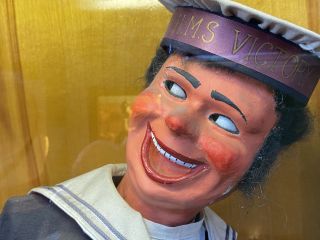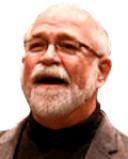Deception
Deception as Play
A Personal Perspective: Tricks, tall tales, and revenge on conspiracy theories.
Posted March 24, 2024 Reviewed by Hara Estroff Marano
Key points
- April Fools' Day encourages play across the generations.
- Mischief is play as long as it stays playful.
For years on the morning of every April 1, I could count on my young daughters rigging the kitchen sink faucet to spritz anyone who turned it on. “You rascals!” I’d yell as they looked on, cackling. “You rapscallions! You scamps!”

The playful April Fool’s prank boasts a long history. In Geoffry Chaucer’s late 14th century “The Nun’s Priest’s Tale,” a fox outfoxes the rooster Chanticleer “syn March bigan thritty days and two.” In Scotland, merry pranksters have long observed Gowkie Day on April first— “gowk” means “fool” in the Scots tongue. The French tradition is called poisson d’Avril, when the pranked may have a paper fish impishly pinned to their backs, making them a target. (Foolish fish, you see, are easily lured, and caught.)
And these days, Google routinely hoaxes users on April 1 with reports of pigeons calculating clicks on webpages, an energy drink that could scan the drinker’s DNA, a toilet internet service provider, a rugby ball with a GPS tracker, and “Google Nose,” a feature that sniffs out information, and so on.
A Hippo’s Footprints
In Ithaca, New York, the winter of 1926, a Cornell University student, an inspired prankster named Hugh Troy, swiped from a professor’s house an umbrella stand fashioned from the foot of a rhinoceros. He used it to leave a trail that led to a hole in frozen Beebee Lake. The lake served as the campus reservoir. The vision of a drowned rhino decomposing in the water supply unnerved college officials. A twist. This story, much retold, may itself be a century-old hoax.
But it is true that Troy, who became an illustrator of children’s books (and, not incidentally, an Army intelligence officer during World War II and, later, an associate of the CIA) went on to forge a distinguished career in pranks.
For example. During his New York years, he carved a fake ear from dried beef, dressed some friends as museum staff, and supervised its installation in an exhibit case in a gallery at the Museum of Modern Art. The object label noted that the ear had once belonged to Vincent Van Gogh. Another ingenious prank: Frustrated by the trouble finding a parking spot in the city, Troy mocked up a fire hydrant from balsa wood and painted it red. He would leave it curbside to save a space outside his apartment building. When he pulled in the open spot, he would pick up the prop and pop it in his trunk.
No, the Martians Have Not Landed
Orson Welles, celebrated as the director of the 1941 film Citizen Kane, was another trickster. On the eve of Halloween, on his radio show, The Mercury Theater on the Air, Welles staged an adaptation of H.G. Wells’ famous novel War of the Worlds. Listeners who missed Welles’ spooky introduction didn’t get that this was a radio thriller and not a live news report.
A breaking news bulletin interrupted the broadcast. The invading Martians, whose spacecrafts had landed in central New Jersey, made short work of armed authorities with their “heat-rays.” Amid background screams, the breathless live feed went dead. As the aliens advanced on Manhattan island, havoc trailing in their wake, rattled listeners besieged the CBS radio network studios on East 52nd Street.
Playfulness usually saves pranksters’ mischief from criticism. But Welles’ prank rode an ethical edge, and the next day he was obliged to apologize for a prank too far.
Tall Tales
Whenever I head from the airport in New York, I am driven both by the cabbie and by my own curiosity.
These professionals, pleasant conversationalists by inclination, have time to fill. Most hail from elsewhere. As I’m not bashful about asking questions about immigration and acculturation, I’m usually rewarded with a companionable, curiosity-satisfying ride.
I’ll ask: What brought you here? How do you keep in touch? What do your kids like best about this country? What’s your favorite (Nepali, Afghan, Ethiopian, Senegalese, Haitian…) restaurant in the city? And, whatever do your relatives make of snowstorms? I hear fascinating stories of home and plucky stories of adaptation and resilience.
But sometimes the exchanges have taken a puzzling turn as the fellow at the wheel sensed an opportunity to pass on inside information to an eager listener. These exchanges have featured their share of weird revelation.
I learned, for example, that Papa Doc, the longtime Haitian despot and a much-feared practitioner of voudon, could become a banana. Mind you that this wasn’t that he was “bananas,”—crazy, unpredictable, and frightening, that is— as I inferred for a moment. It was that he could practice the occult art of transfiguration! C’est vrai! He could become a banana. Was I being pranked? Perhaps. Then there was another cabbie’s tale, more earnestly argued, about the dead terrorist hotel-bombers in Mumbai whose DNA profile matched no known ethnic group on “this planet.”
Fun with Crackpots
As a captive passenger, I’ve also had more than one unamusing encounter with home-grown American conspiracy theorizers.
With these crackpots, confessedly, I’ve had some fun. For one driver who knew precisely which religious group “runs this f@ꜿ%ing city, bunkie,” I improvised a prank of my own—a retaliatory fantasy for his anti-Semitic rant.
I told him that I’d learned from a cousin whose neighbor had a sister-in-law who heard directly from a clerk in the mayor’s office, who had it straight from the deputy traffic commissioner, that there was a contingency plan to replace taxis with helicopters. Sorry, taxicabs were on their way out. But look. Brilliant idea. Right? No more gridlock! And, because the downtown/uptown flights would land on third-floor platforms to pick up passengers and the crosstown traffic would land on the seventh floor, I enthused, no mid-air collisions!
He found several practical objections to this plan, but I had an answer to each based on the authority of the 411 from the cousin whose neighbor had a brother-in-law who….
For me, the tall tale I told was harmless, a mild payback to the ever-more frustrated purveyor of pernicious lies. And no apologies for this. Today, with shameless high-profile misinformation on the rise in this nation, my prank would hardly raise a moral eyebrow.
References
Alfred W. Pollard, ed., Chaucer’s Tales: The Nun’s Priest’s Tale (1915); Con Troy, Laugh with Hugh Troy: The World’s Greatest Practical Joker (1984).
A. Brad Schwartz, Broadcast Hysteria: Orson Welles ‘War of the Worlds’ and the Art of Fake News (2015); Robert E. Bartholomew, Little Green Men, Meowing Nuns, and Head-Hunting Panics: A Study of Mass Psychogenic Illness and Social Delusion (2001); A. Terry Apter, “Anti-Semitism and the Pandemic of Intolerance,” Psychology Today (November 5, 2018).




